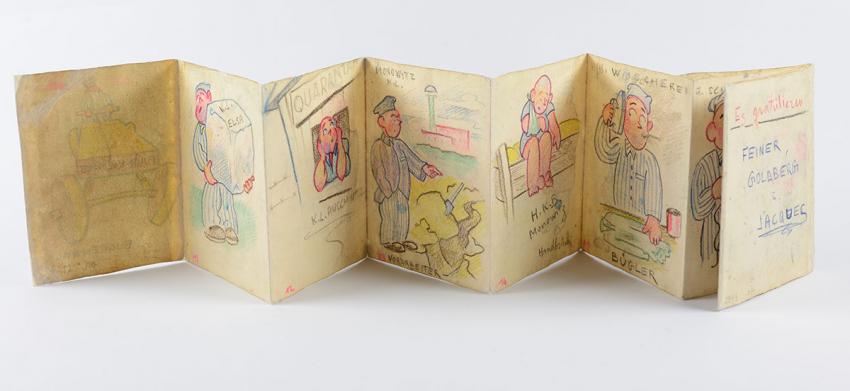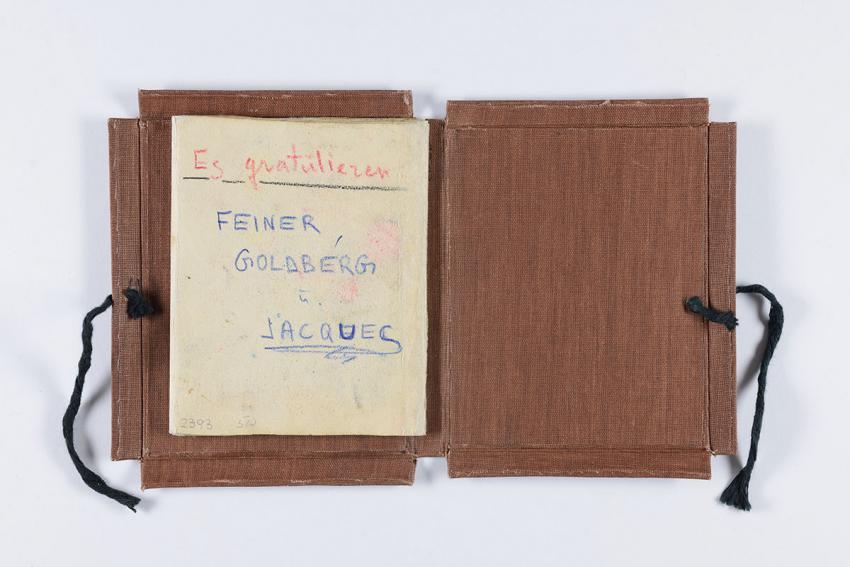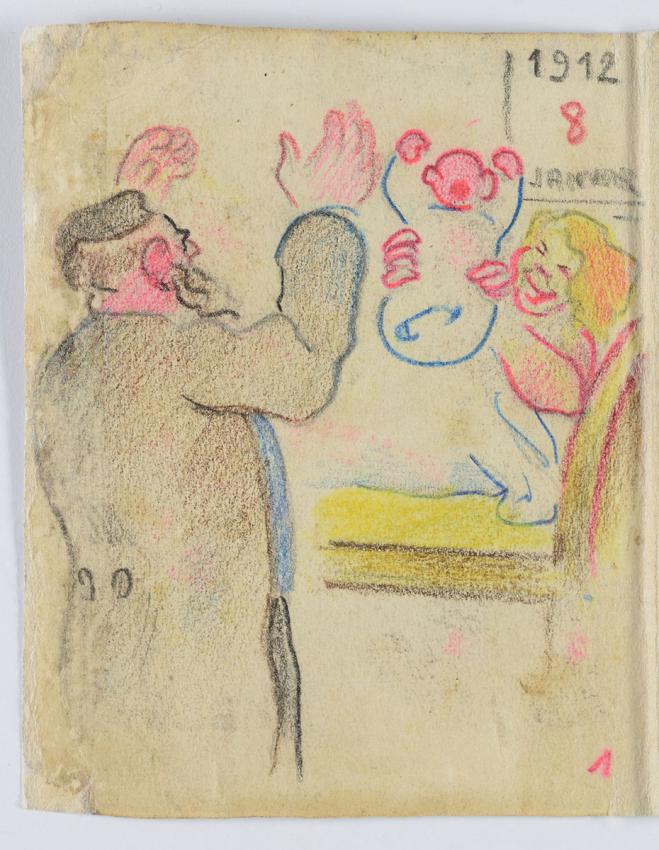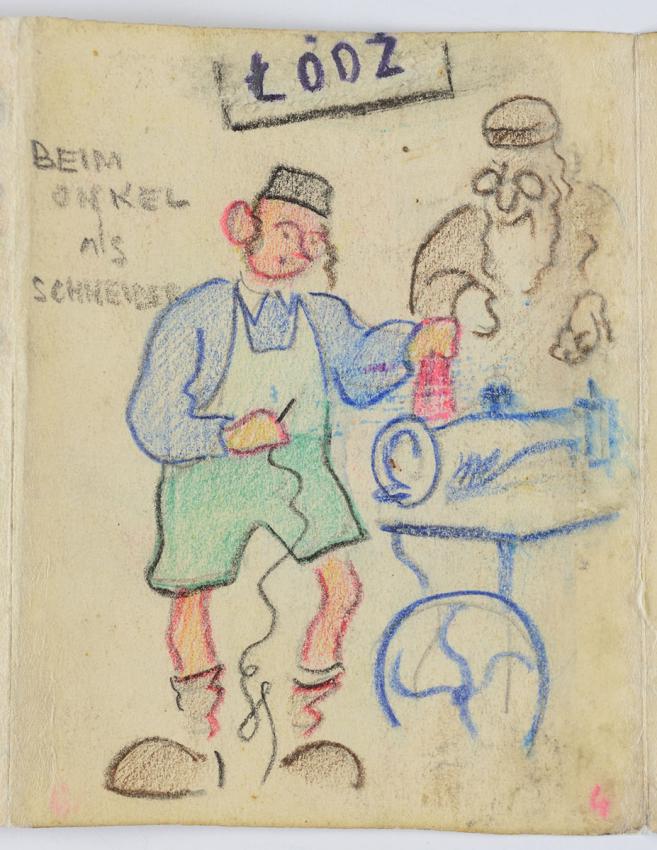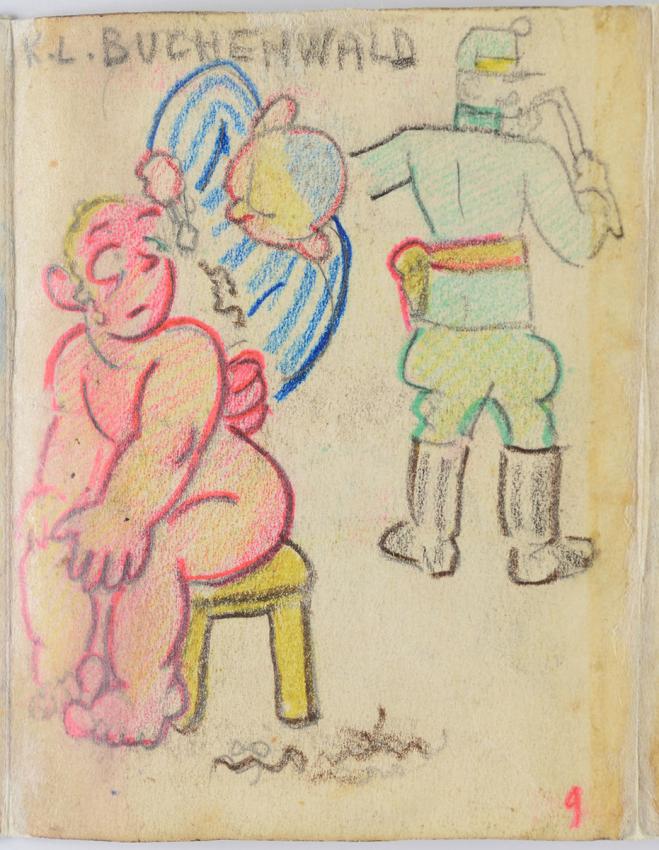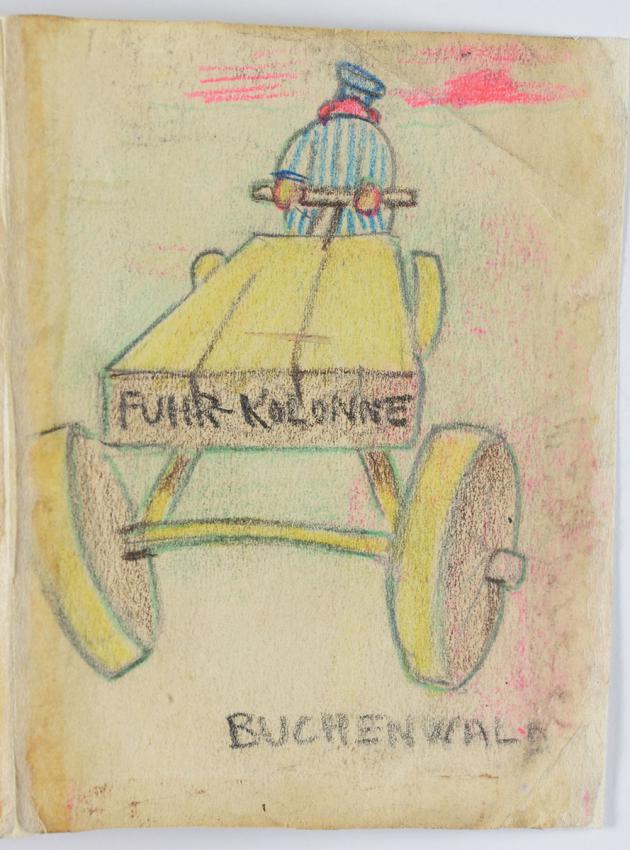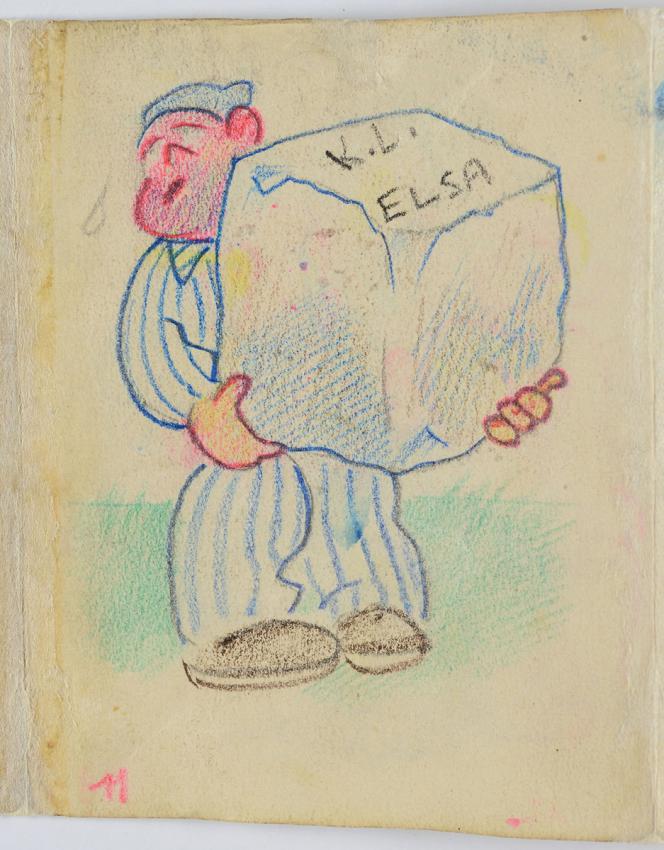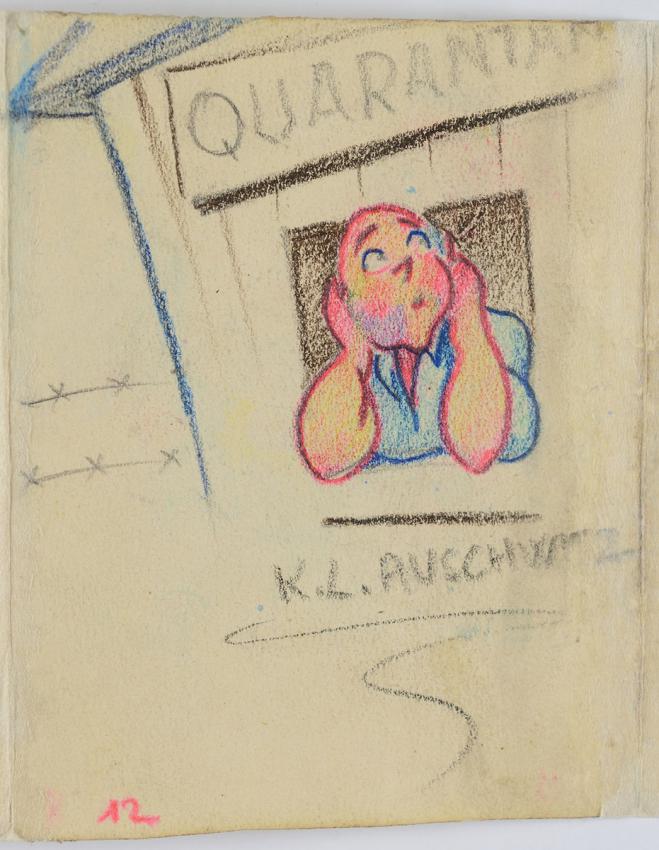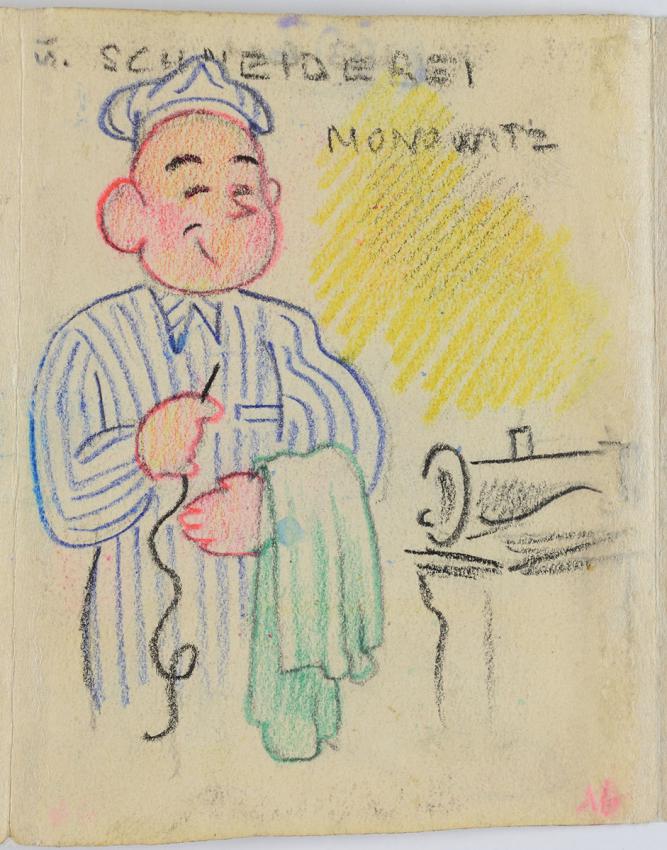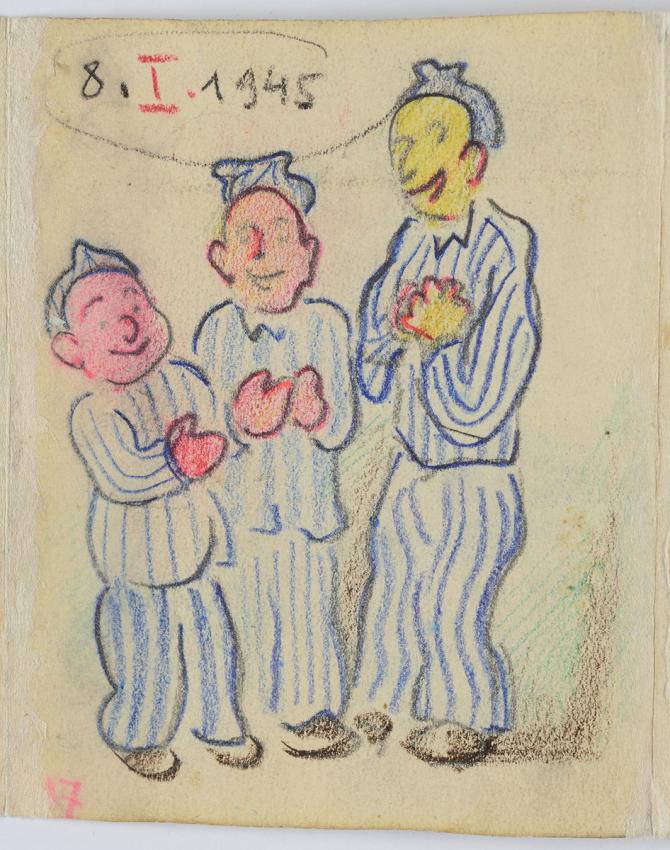Soon after Auschwitz was liberated by the Red Army, former prisoner Ben Kolton found an illustrated greeting card on a pile of debris in the camp. Kolton took the card and looked after it for almost three decades, until, in 1983, he decided to donate it to Yad Vashem
The decorated card aroused great curiosity among the staff of Yad Vashem's Artifacts Collection, although there was no information as to its creators, its recipient, or the event for which it was given. The only clue was on the back page under "Best Wishes," where three names appeared: Feiner, Goldberg and Jacques.
Initial investigations carried out to shed some light on the card and its talented authors were based on the content of the illustrations, the headings, and names of camps inscribed within.
The greeting card opens with a drawing depicting the birth of a baby boy on 8 January 1912. This illustration, together with the date inscribed at the end of the card – 8 January 1945 – made it clear that the card was in fact created to mark the 33rd birthday of one of the camp inmates. The other drawings and their titles reinforced this assumption, and slowly it was understood that the card depicted the life story of the man whose birthday fell just ten days before the evacuation of Auschwitz and a short time before the camp's liberation. It seems that the card's illustrators knew their friend well, and much could be learned about his life from their drawings.
The birthday celebrant was born to a religious Jewish family, studying in a heder as a young boy. His father, a shoemaker, taught his son his occupation; later, as a youth, he learned tailoring with an uncle in Lodz. When he embarked on an independent life, he opened his own tailoring business.
The young man's relationships with women are depicted in the eighth and ninth drawings. The latter hints at his marriage, or perhaps engagement, to his beloved, although in the previous illustration he is portrayed as a bachelor "pursued" by young ladies.
"A Successful Party" is the final drawing presenting the period before the war. In the next scene, we see the young man as a prisoner in Buchenwald, exhaustedly pulling carts as a slave laborer. The next image is of a prisoner lifting a heavy block on which is written "Elsa" – a reference to forced labor in the “Portlandzementwerke" cement works. From Buchenwald he was sent to Auschwitz where he was assigned to forced labor in Buna-Monowitz (Auschwitz III). We understand that the prisoner was set to work in the clothing storehouse as a tailor, among other tasks. The last illustration is most likely of the three friends who signed the card.
Ever since the card was donated to Yad Vashem, efforts have been made to discover who was involved in its creation. When access to various European archives was granted, two of the three signatories were finally identified through the fact that very few transports had traveled from Buchenwald to Auschwitz. On a list of prisoners of one of those transports on 16 October 1942 the names Feiner and Goldberg appeared. These names were also recorded on a separate list in the Auschwitz archives – those working in the clothing storehouse in Monowitz, who underwent a urine test in March 1944. The prisoner numbers were close: Feiner was given the number 68427, and Goldberg 68456. According to Auschwitz records, the two arrived at the camp from Buchenwald on 19 October 1942.
After the identities of two of the card's creators were discovered, it was possible to discover a little more about them. Research revealed that Maks Feiner was born in 1909, lived in Krakow, Poland, and was arrested in 1940. Mordechai Goldberg was born in 1907 in Tomaszow Mazowiecki, Poland; he was married and father to one child, and was detained in 1939. Feiner and Goldberg, both tailors by profession – like their friend – underwent a similar journey to the one illustrated on the greeting card: from Buchenwald they were taken to Auschwitz, and from there sent to forced labor in Buna-Monowitz. Towards the end of the war, the two were forced to set out on a death march, reaching Buchenwald for a second time, and, as sources indicate, placed in the tailors' block. Feiner was ultimately liberated from Dachau, and Goldberg from Buchenwald.
These discoveries notwithstanding, numerous efforts over the years to cross-reference details were unsuccessful in revealing the anonymous prisoner who received the birthday greeting a short time before the liberation of Auschwitz. However, when the decision was made to publicize the story of the card to mark 70 years since the liberation of Auschwitz, a further check was made of archival documents. This finally revealed the name of a person whose details matched all of those previously collated: his birthday on 8 January 1912, his imprisonment in the Lodz ghetto, his deportation to Buchenwald, and, like Feiner and Goldberg and only a few other prisoners, his transfer from Buchenwald to Auschwitz. This person was also sent to Buna-Monowitz, where he remained until January 1945. His prisoner number was 69780 (close to those of his friends) and he was a tailor by profession. He was sent on a death march, reaching Gleiwitz, some 80 km (50 miles) away.
The decades-long investigation was finally over: the prisoner who marked his birthday on 8 January 1945 at Auschwitz was David Goldstein. He was liberated from Gleiwitz, and immigrated to Israel in 1946. Efforts to complete his life story continue.
Yad Vashem Artifacts Collection
Gift of Benjamin Kolton, Washington, USA
The research was facilitated by the MyHeritage database.
